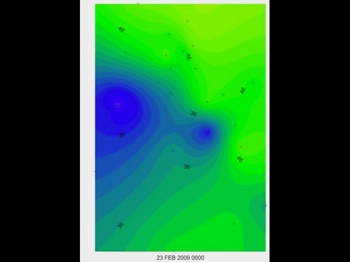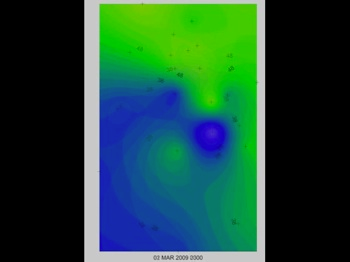O3i :: Upper Green River Ozone Investigation
Project History: The Upper Green River Ozone investigation was instigated in 2008 due to continuing exceedances of NAAQS ozone standards in the Upper Green River Basin of Wyoming.
Study Area: The study area is located in Sublette County in southwestern Wyoming. This largely rural area is home to two substantial natural gas devlopment areas, the Pinedale Anticline Project Area (PAPA), and Jonah Field. The gas fields are located in a basin that is flanked by the Wyoming Range, and the Wind River Range. The geography of the area leads to unique weather patterns, including strong wintertime capping inversion. Emissions from the gas field, geography, and weather combine here to create ideal conditions for the creation of wintertime ozone.
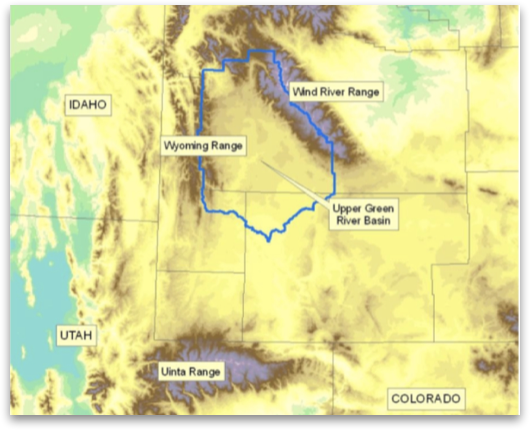
Objectives: During the first year of this project, we fulfilled three primary objectives:
Objective One – Short-term ozone and ozone precursor monitoring at five sites throughout the study area.
To fulfill this objective, we constructed a mobile laboratory that allowed us to monitor pollutant levels of ozone, oxides of nitrogen, methane, and non-methane hydrocarbons. Sites were chosen based on locations relative to the oil and gas developments – two were upwind, two were downwind, and one was located in the town of Pinedale, Wyoming. Monitoring was conducted for approximately thirty days at each site, and provided us with data to assess pollutant levels at the various sites.
To fulfill this objective, we constructed a mobile laboratory that allowed us to monitor pollutant levels of ozone, oxides of nitrogen, methane, and non-methane hydrocarbons. Sites were chosen based on locations relative to the oil and gas developments – two were upwind, two were downwind, and one was located in the town of Pinedale, Wyoming. Monitoring was conducted for approximately thirty days at each site, and provided us with data to assess pollutant levels at the various sites.
Objective Two – To conduct ozone spatial surveys during periods when high ozone levels were forecast.
To fulfill this objective, we developed a simple grid to guide placement of fifty Ogawa PS-100 passive ozone sampler throughout the study area. Passive samplers were placed at selected sites by a team of volunteers including Federal, State, Town, industry and citizen representatives. Samples of ambient ozone were collected for eight hours and gave us the data necessary to create isopleth maps of ozone levels throughout the study area.
To fulfill this objective, we developed a simple grid to guide placement of fifty Ogawa PS-100 passive ozone sampler throughout the study area. Passive samplers were placed at selected sites by a team of volunteers including Federal, State, Town, industry and citizen representatives. Samples of ambient ozone were collected for eight hours and gave us the data necessary to create isopleth maps of ozone levels throughout the study area.
Ozone isopleth maps:
February 2009 ozone isopleth map.
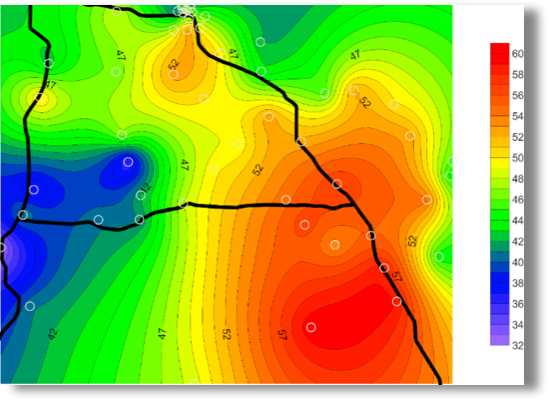
June 2009 ozone isopleth map.
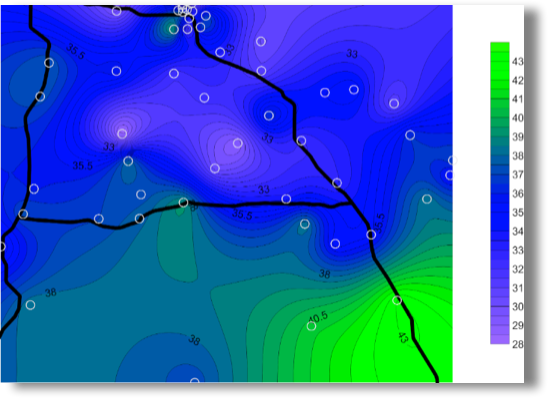
Ozone Movies:
